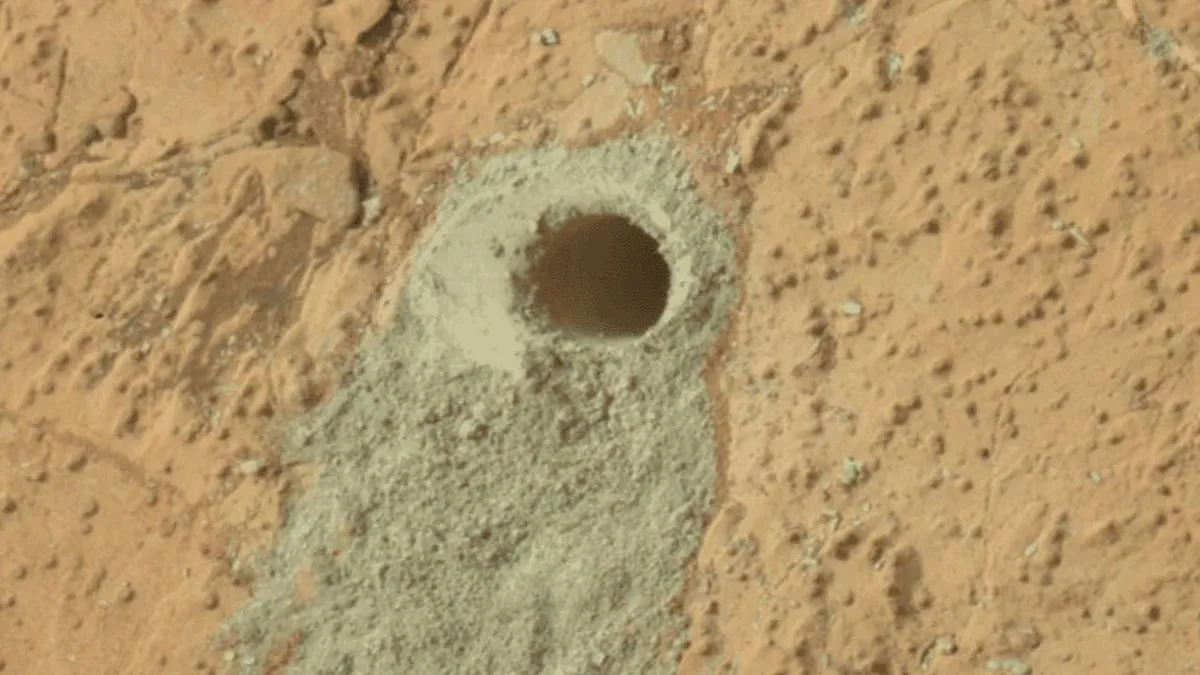
In a groundbreaking announcement, scientists have identified the largest organic molecules ever discovered on Mars. These remarkable molecules may have originated from the breakdown of fatty acids that existed approximately 3.7 billion years ago and were subsequently preserved in sediments deposited by an ancient lake on the Red Planet. Although the presence of these molecules does not definitively prove that life once existed on Mars, researchers believe that their discovery suggests the possibility of past life on the planet.
Caroline Freissinet, an astrochemist from the Laboratoire Atmosphères et Observations Spatiales in Guyancourt, France, stated, "Our study proves that, even today, by analyzing Mars samples, we could detect chemical signatures of past life, if it ever existed on Mars." This statement underscores the importance of the research and the implications it holds for future explorations of the Martian surface.
The organic molecules in question are classified as alkanes, a type of hydrocarbon that consists of chains of carbon atoms with hydrogen atoms attached. The NASA Curiosity rover made this significant discovery when it drilled into a sample of mudstone from a rock dubbed 'Cumberland' in the Yellowknife Bay region of Gale Crater back in 2013. Curiosity has been exploring the Gale Crater, which spans 96 miles (154 kilometers), since its landing in 2012. This crater is believed to have been flooded by an ancient lake, making it a prime location for searching for signs of past habitability.
Yellowknife Bay, where the Cumberland rock is located, was once the floor of this ancient lake. Evidence suggests that liquid water existed in Gale Crater for millions of years, possibly even longer, providing a suitable environment for the chemical processes necessary for life to develop. Daniel Glavin of NASA's Goddard Space Flight Center emphasized this point, stating, "There is evidence that liquid water existed in Gale Crater for millions of years, and probably much longer, which means there was enough time for life-forming chemistry to happen in these crater-lake environments on Mars."
The organic molecules were identified using Curiosity's Sample Analysis on Mars (SAM) suite of instruments. This advanced suite allows the rover to drill rock samples and analyze them by baking them in an oven at a temperature of 1,800 degrees Fahrenheit (1,000 degrees Celsius). This process releases gases from the sample, which are then separated and examined by specialized sensors, including a gas chromatograph and a mass spectrometer. These instruments can identify key elements for life, such as carbon, nitrogen, oxygen, phosphorus, and sulfur. Additionally, a separate laser spectrometer searches for signs of water and smaller organic molecules like methane.
Freissinet and Glavin previously co-led discoveries of organic molecules in the Cumberland sample, which included methane as well as chlorine or sulfur-bearing organics. However, prior to this recent study, the largest organic molecules found on Mars were limited to just six carbon atoms. To explore larger organic molecules, Freissinet and Glavin modified the SAM procedure, focusing specifically on detecting amino acids. While they did not find amino acids, they did uncover alkanes larger than any previously recorded on Mars, such as decane (10 carbon atoms), undecane (11 carbon atoms), and dodecane (12 carbon atoms).
Despite dodecane being the largest alkane discovered on Mars to date, it is still relatively small compared to the largest alkanes found on Earth, which can have over 150 carbon atoms. There is a possibility that the large Martian alkanes may have a geochemical origin, indicating they could have formed without biological processes. However, laboratory experiments conducted by Freissinet and Glavin's team suggest that these alkanes could be remnants from the breakdown of fatty acids encapsulated in the ancient clay-rich sediments, pointing towards a potential biological connection.
The timing of the fatty acid presence is particularly intriguing, as 3.7 billion years ago coincides with the period when life is believed to have first emerged on Earth. This raises the question: could life on both planets have developed concurrently? While this remains speculative, the detection of long-chain alkanes on Mars serves as a significant clue in the ongoing quest to understand the planet's history.
While the presence of long-chain alkanes is not definitive proof of life on Mars, it opens new avenues for research. Unfortunately, Curiosity's SAM instruments are currently unable to detect organic molecules larger than dodecane, which highlights the need for future missions to Mars. "We are ready to take the next big step and bring Mars samples home to our labs to settle the debate about life on Mars," stated Glavin, who serves as NASA's senior scientist for sample return. However, the success of this endeavor depends on the timely launch of a mission to retrieve samples cached by Curiosity's sibling rover, Perseverance. NASA is currently facing challenges in designing and funding this crucial retrieval mission and has sought assistance from private companies.